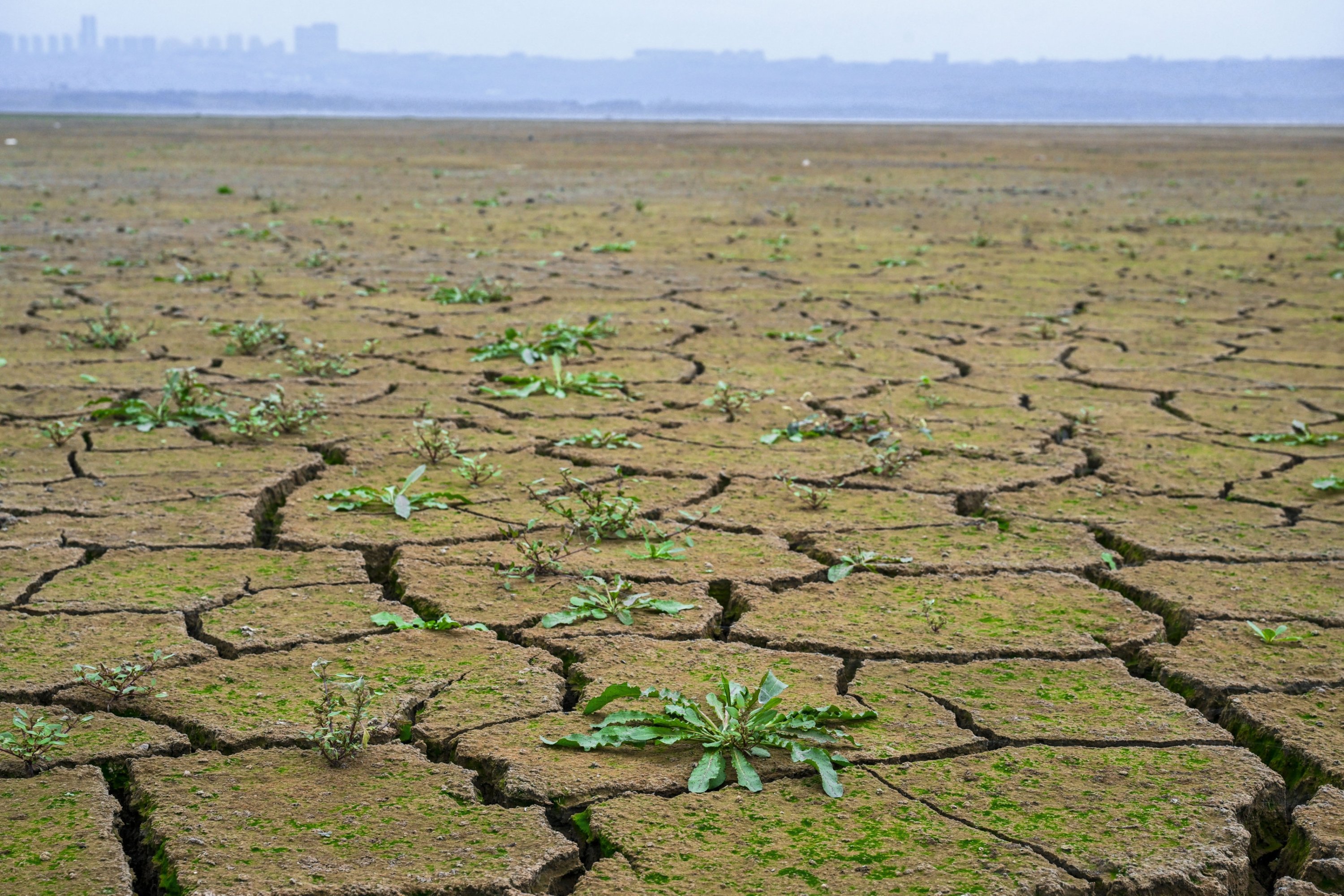In Istanbul, diminished rainfall this year has led to a drastic drop in water levels at three out of 10 dams, down to around only 3%.
The city, experiencing one of its most significant droughts in recent years, faces the impact of prolonged below-average rainfall and temperatures consistently exceeding seasonal norms, causing some of the dams that supply water to dry up.
According to data from the Istanbul Water and Sewage Administration (ISKI), the significant water source of Büyükçekmece Lake has been affected by the drought. Last year, the lake’s water level, which was at 46.64% during the same period, plummeted to 3.97%, marking the lowest level in the past 11 years.
Aerial footage captured by the Anadolu Agency (AA) team shows receded waters in areas that were previously filled in Büyükçekmece Lake, dramatically displaying cracked and dry land where there was once water due to the drought.

Among the dams supplying water to the city, Sazlıdere Dam records the lowest water level. Last year, on Nov. 5, the dam’s water level was at 44.02%, which has currently dropped to 2.77%.
Pabuçdere Dam is on the verge of drying up, with its current water level at 3.45%, slightly higher than the 3.42% measured during the same period last year. Similarly, Kazandere Dam’s water level, which was at 27.01% last year on Nov. 5, has decreased to 7.3%.
Terkos Dam currently stands at a 7.95% water level, while it was at 43.34% during the same period last year. Elmalı Dam, which had a water level of 43.58% on Nov. 5 last year, has plunged to its lowest level in six years, reaching 16.04%.
Alibey Dam, registering a water level of 22.9% last year, has now dropped to 17.7%, the lowest level in a decade. Istrancalar Dam’s water level, which was at 26.78% last year, is currently recorded at 27.59%.
Furthermore, Darlık Dam, with a water level of 41.72% on Nov. 5 last year, has now reduced to 28.83%. The water level in Ömerli Dam stands at 38.12% currently, down from 42.92% at the same time last year, marking the lowest level in the last nine years.
Among the 10 dams supplying water to the city, seven have water levels below 20%, with an overall average of 17.59%.
Call for measure
Professor Hüseyin Toros from Istanbul Technical University’s Department of Meteorological Engineering emphasized the importance of taking immediate measures in water usage.
“If residents can save one-third of their water usage, Istanbul will not face water scarcity. By doing so, the city can manage until new rainfall arrives,” he said.
“Additionally, reducing water consumption in the kitchen, at sinks, in showers and toilets is crucial.”
The severe repercussions of an ongoing drought have extended their reach to various regions in the country, where the dire water scarcity issue has intensified due to the effects of climate change.
As a proactive response to the climate crisis and in a concerted effort to encourage water conservation, government authorities have introduced a comprehensive “Drought Management Plan” for 23 basins nationwide, a recent initiative that aims to address the pressing issues at hand.
The plan, unveiled earlier this year, not only serves to heighten public consciousness regarding the perils associated with climate change but also endeavors to promote responsible and sustainable water usage practices to ensure the longevity of our vital water resources.
Source: Daily Sabah









